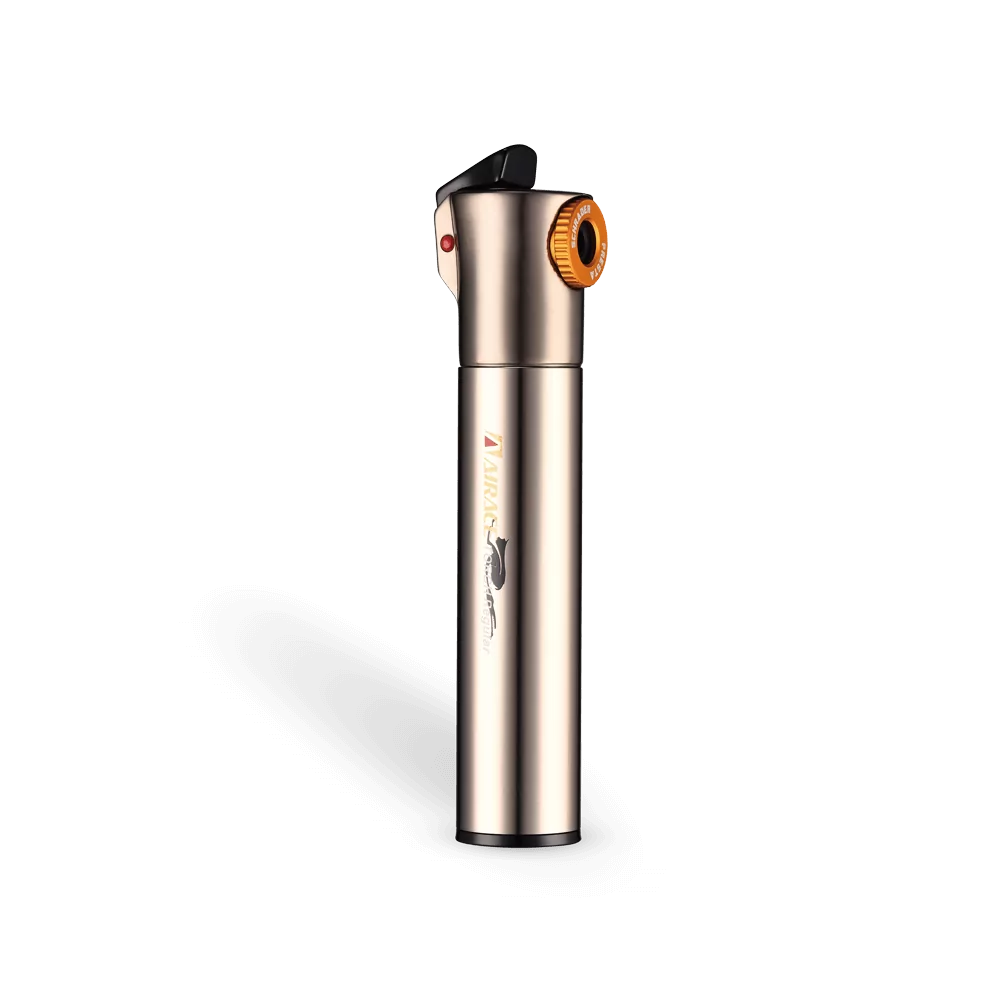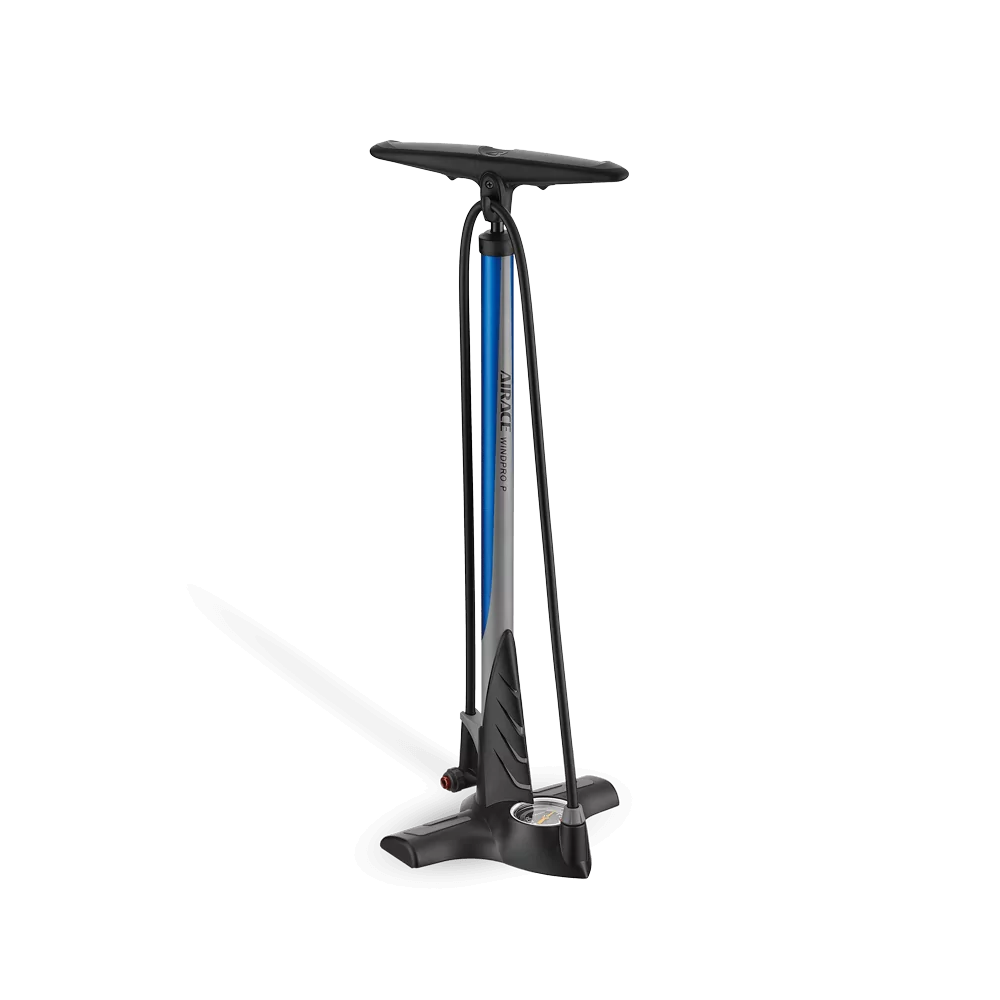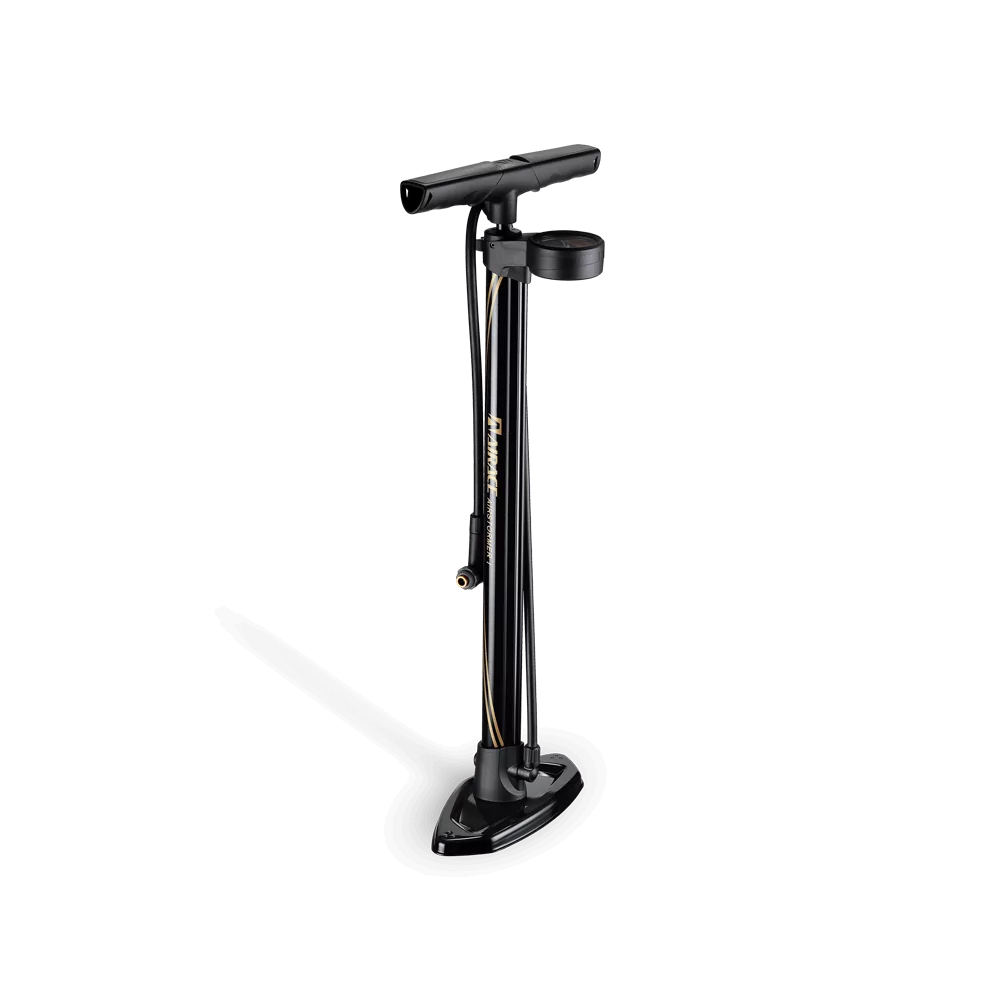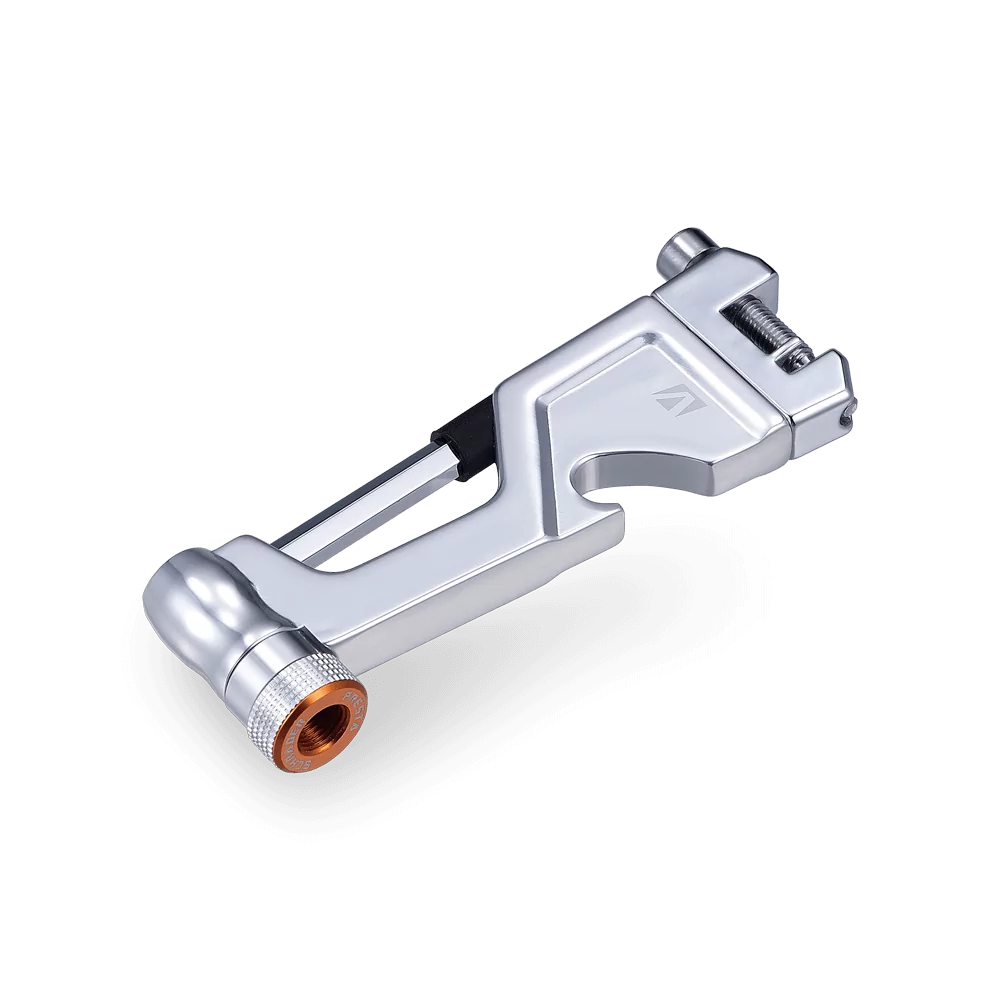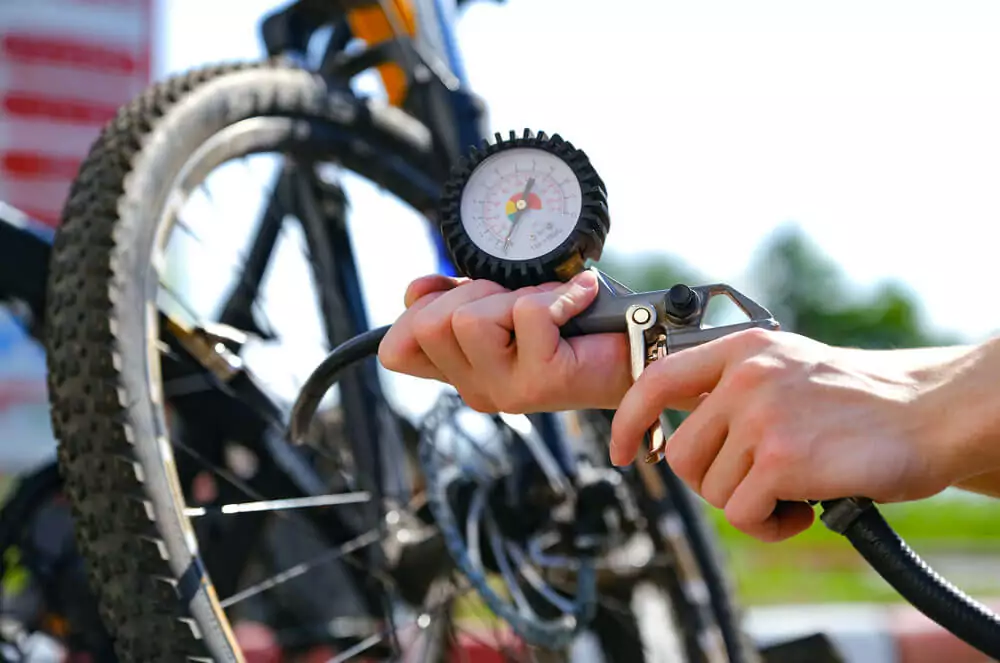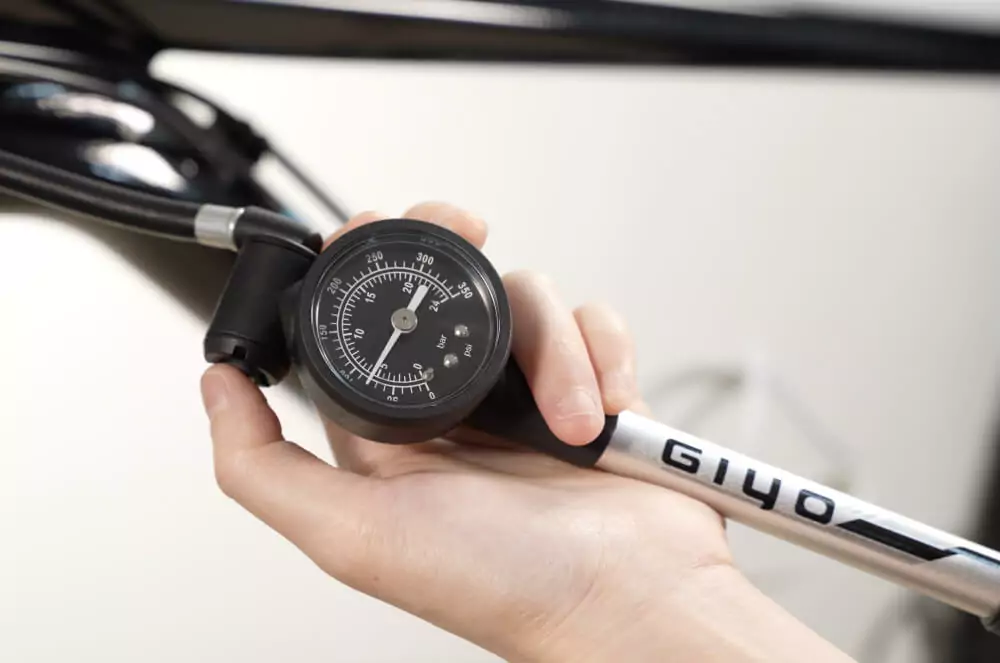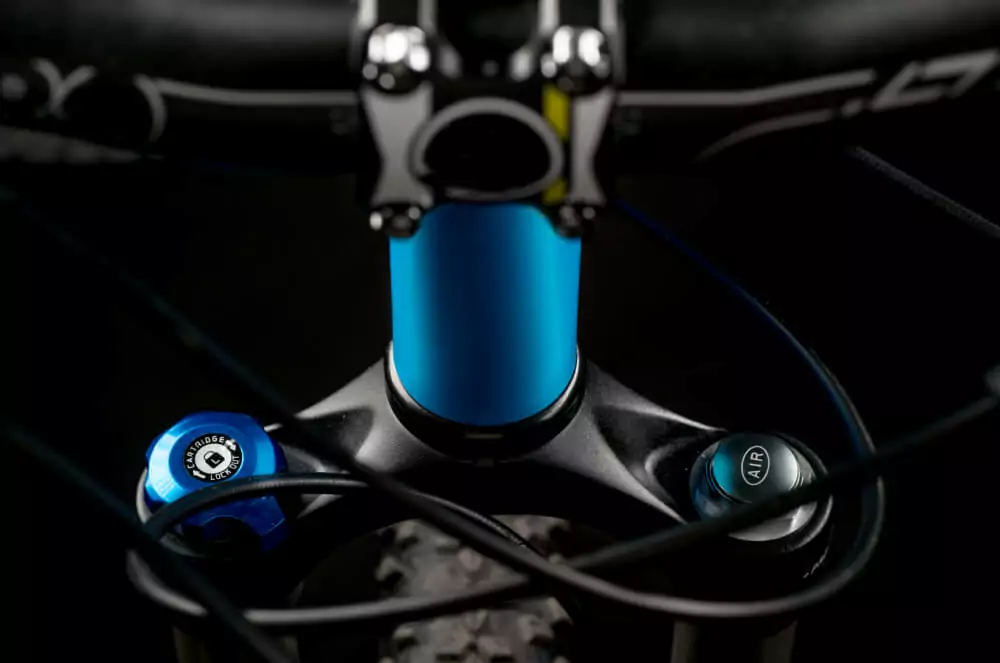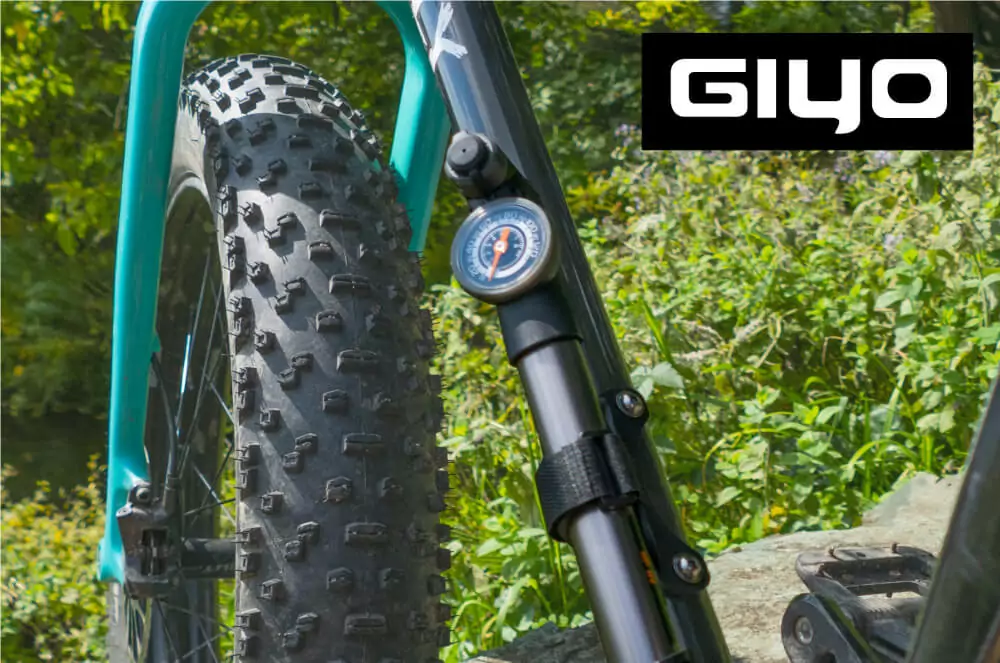As a cyclist, you’re likely aware of the importance of proper bike tire pressure. Not only does it affect the performance and comfort of your ride, but it can also impact the frequency of flats. However, finding the perfect tire pressure for your bike isn’t always a straightforward process. In this article, we’ll share our expert tips for achieving the ideal tire pressure and optimizing your ride.
Pump it up: Finding the Right PSI
To achieve the best possible performance and comfort, you need to determine the correct tire pressure for your bike. Narrow tires require higher air pressure than wide ones. Road tires, for instance, usually require 80 to 130 psi, while mountain bike tires need 25 to 35 psi, and hybrid tires demand 40 to 70 psi.
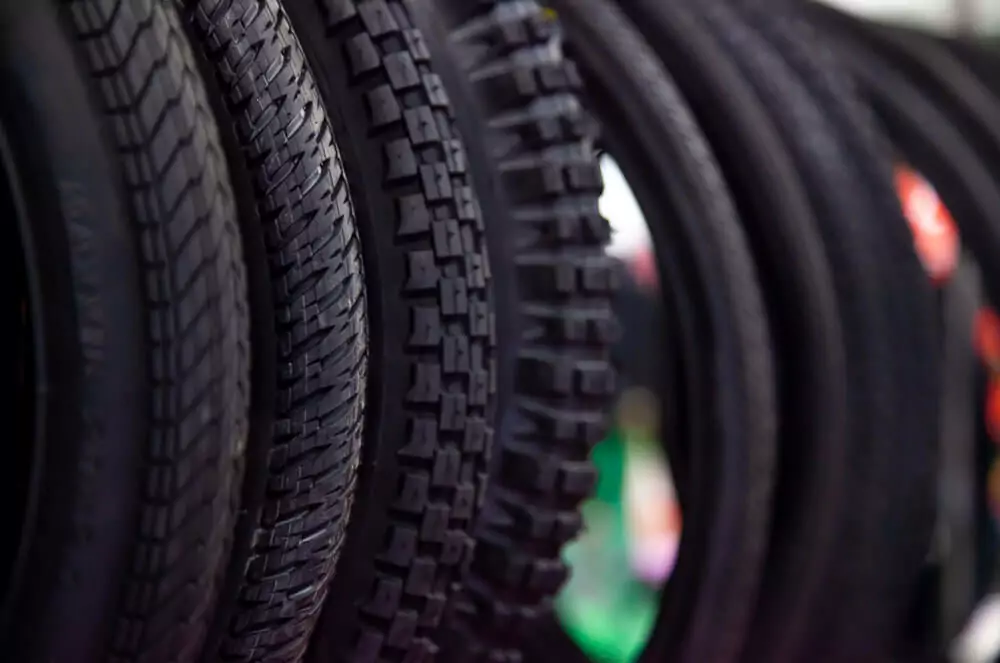
To find your ideal pressure, start with the recommended range and adjust it according to your weight. A heavier rider requires higher pressure than a lighter one. For example, a 165-pound cyclist might use 100 psi on a road bike, whereas a 200-pound rider should run closer to 120 psi. To find out more check out the research on the impact of tire pressure and vertical load on rolling resistance. Be sure never to exceed or fall below the manufacturer’s recommended tire pressures, which are printed on the sidewall.
Check Tire Pressure Regularly
Tire pressure tends to decrease over time, even when there are no leaks or punctures. While properly set up tubeless and butyl tube tires leak less air than lightweight latex tubes, it’s essential to check your tire pressure regularly. The rate of air loss is influenced by several factors such as temperature, with a 2% decrease in pressure occurring for every 10-degree dip in Fahrenheit.
Some cyclists check their tire pressure before each ride, while others do it once a week. Whatever your preference, make sure to develop a regular habit of checking and topping off your tire pressure. Also, remember to check the pressure the day after repairing a flat with CO2 canisters. Carbon dioxide seeps through the tube wall, causing the tire to lose air pressure faster than usual.

Find the Sweet Spot: Adjusting for Terrain
Tire pressure isn’t a one-size-fits-all solution. Higher tire pressure doesn’t always equal lower rolling resistance, and it’s essential to find the sweet spot that balances performance and comfort. Overinflated bike tires transmit impacts to the rider, sacrificing speed and comfort.
On new pavement, your tires might feel great at 100 psi, but on rough terrain, they might roll faster at 90 psi. In wet conditions, you may want to run 10 psi less than usual to improve traction. As a mountain biker who rides to the trailhead, you might want to reduce your pressure from 40 psi to 30 psi.
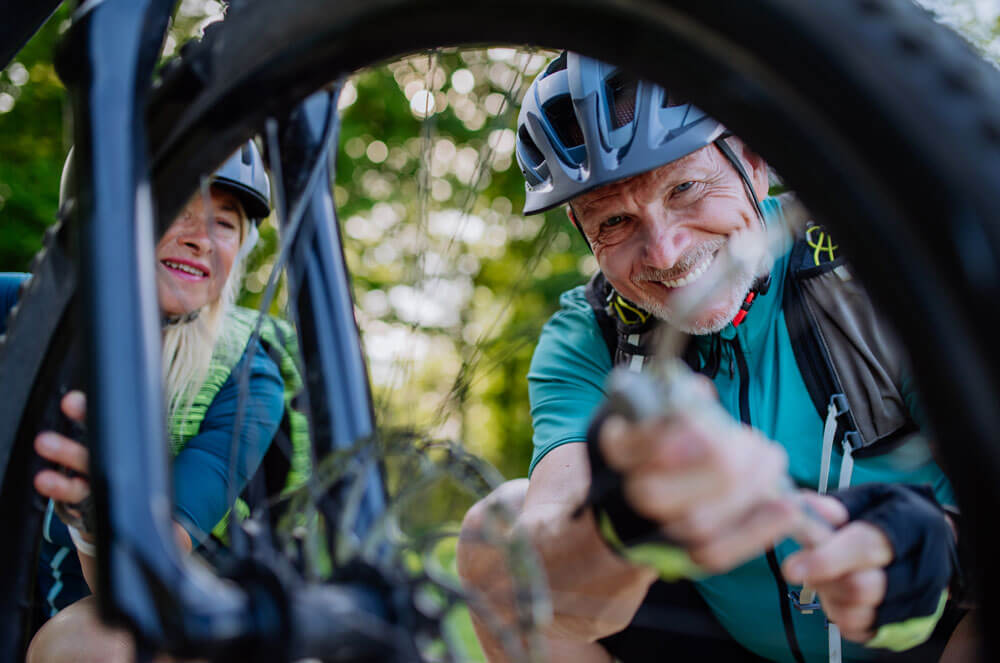
Don’t Overinflate
The general bias is always to overinflate, but more isn’t always better. The maximum pressure listed on the sidewall is often too high and doesn’t consider other factors such as rider size and terrain. Rolling resistance does increase with lower pressure, but only slightly, even at pressures down to 60 psi.
Several studies show that the biggest differences in rolling resistance are not in pressure, but the tire design you’re using. Therefore, you want to lower your pressure if you’ve recently moved to wider tires, about to embark on a ride full of cornering and switchbacks, or ride surfaces like chip seal.
Adjust According to Tire Volume
If you’re swapping from a traditional 23mm road clincher to 25mm or 28mm tires, you’re increasing tire volume significantly, so you have to adjust air pressure downward. Here are sample bike tire pressure charts to consider:
Road Bike Tire Pressure Chart:
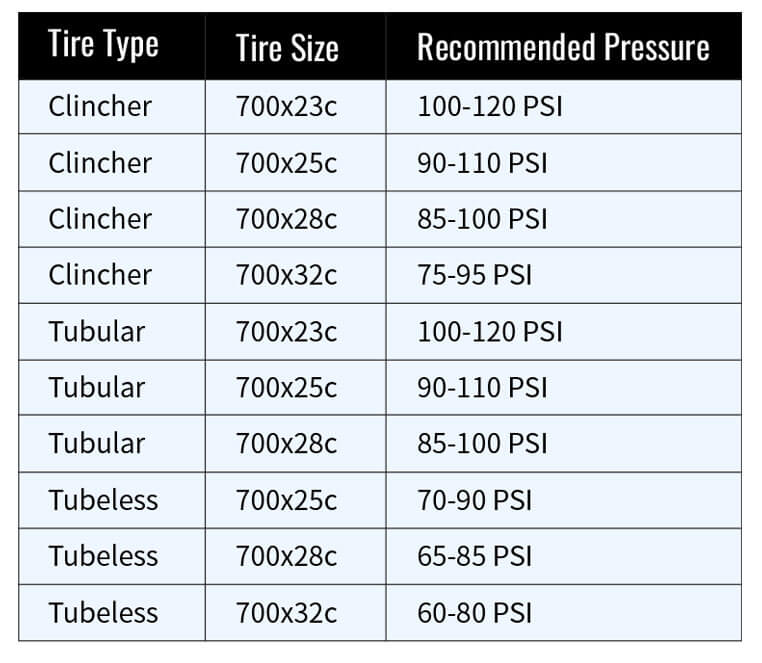
Mountain Bike Tire Pressure Chart:
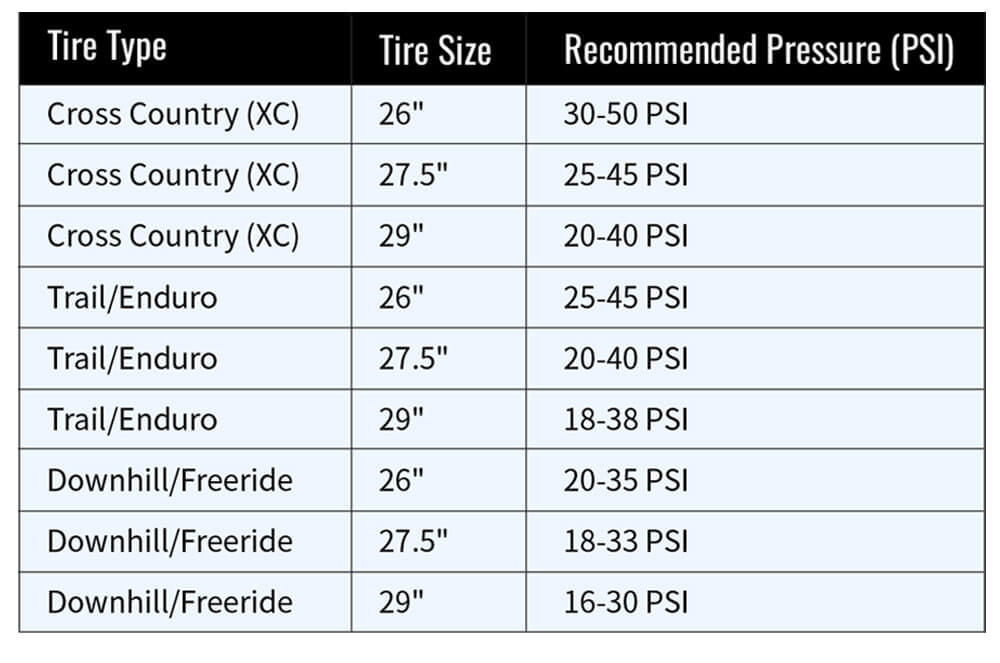
Beware of Inaccurate Floor Pump Gauges: Tips for Proper Tire Inflation
As a cyclist, one of the most crucial aspects of maintaining your bike is proper tire inflation. Not only does it affect the ride quality and performance, but it also impacts your safety on the road. However, if you’re using a floor pump to inflate your tires, you may not be getting the most accurate reading from the gauge.
Inaccurate Gauge Readings
Floor pump gauges are not always reliable when it comes to measuring tire pressure. This is because they measure pressure at the gauge, not in the tire. The gauge measures the air pressure inside the pump, which can be significantly different from the pressure in your tire. Additionally, gauge quality can vary greatly, with some being off by a few psi or even as much as 10 to 15 psi.
Get a Separate Gauge
To ensure that you are getting an accurate reading of your tire pressure, it’s best to invest in a separate gauge. A needle-type Presta gauge is a simple, affordable, accurate, and durable option. Other brands also make low-psi versions (30 or 15 psi) specifically designed for use with mountain, cyclocross, and fat bikes for better resolution.
Play with Different Pressures
It’s common practice for many cyclists to inflate both their front and rear tires to the same pressure. However, this may not be the optimal approach for every rider. The weight balance on your bike is not always 50-50 front to rear. According to a study at the University of Colorado, road riders typically have a weight distribution of around 40 percent on the front and 60 percent on the rear, but this can vary across different riders.
This means that the pressure you prefer for your tires will depend on a variety of factors, including your tire choice and riding style. However, it’s clear that you should not run the same pressure front and rear. For instance, if you weigh 150 pounds with a 40-60 weight distribution, there’s 90 pounds on the back wheel and 60 on the front. Consequently, it’s reasonable to run proportionately less pressure up front. While it may not be 50 percent less, it’s not unreasonable to think it could be 15 to 20 percent less.
Accurate tire pressure is vital for optimal bike performance, safety, and comfort. If you’re relying on a floor pump gauge, it’s likely not giving you an accurate reading. Therefore, it’s essential to invest in a separate gauge for optimal tire pressure measurement. Furthermore, play with different pressures and don’t assume that your front and rear tires should be inflated to the same pressure. By taking these steps, you’ll be able to achieve the perfect tire pressure for your riding style and weight distribution, ensuring a comfortable and safe ride.
